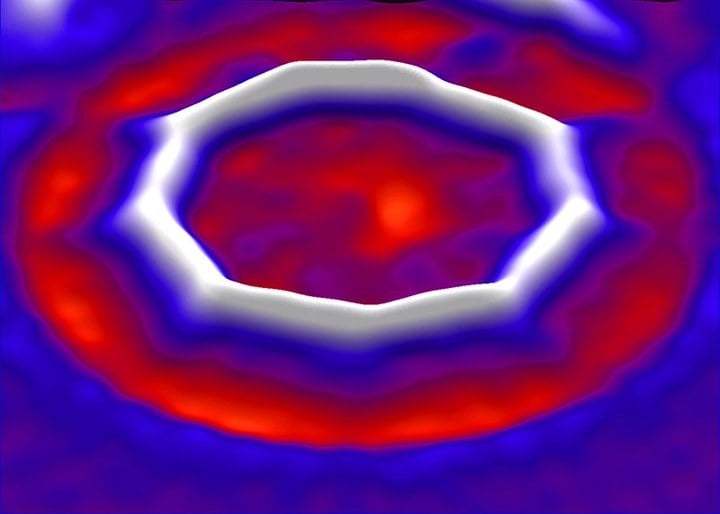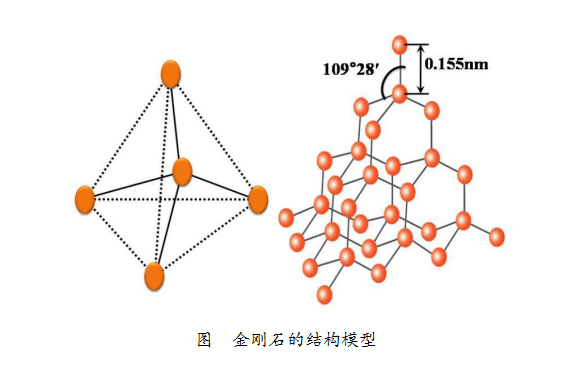On August 15th, Nature’s impurities published a major scientific breakthrough today: Oxford University chemists and IBM’s team first produced a ring-shaped pure carbon molecule of 18 carbon atoms. This has been “almost difficult to succeed” in the past, and there have been countless teams trying to give up.

▲3D image of carbon-18 molecule made with atomic force microscope. Image courtesy of IBM
In the beginning, scientists first synthesized a triangular molecule composed of carbon atoms and oxygen atoms, and then generated a carbon 18 molecule by an electric current. This molecule is called “cyclocarbon”, and preliminary research has found it to be a semiconductor, which may be of great help in the manufacture of molecular-scale transistors.
Many scientists say this is definitely a “shocking breakthrough.”
Carbon is a common non-metallic element. The carbon element consisting of pure carbon may behave differently, such as hard and transparent diamonds and black, soft graphite. They are called “allotropes.” According to popular science China, the difference is that their molecular structure, in the diamond, each carbon atom is closely combined with the surrounding four carbon atoms through a strong interaction, so that the three-dimensional structure is very stable.

▲ Image from: Science China
Graphite is a layered structure. For a single layer, each carbon atom is tightly bound by a strong interaction with its three carbon atoms. Because the distance between the layers is large, the interaction of carbon atoms is weak, so the graphite is soft and slippery.
In theory, a carbon molecule can also be composed of two adjacent atoms, thus forming a ring-shaped structure. Similar studies have been done in the past, but such structures are very unstable compared to diamond and graphite, and it is difficult to have real applications. This team of scientists has proposed a new method. At present, under certain preconditions (the substrate surface is kept cool, about minus 450 degrees Fahrenheit), the new carbon molecules can remain stable.
This could have a major impact on the chip industry. For example, the current mainstream mobile phone processors are 10 nm and 7 nm processes, and chip manufacturers are also researching new products in 5 nm or even 2 nm processes. Manufacturers are trying to make the size of transistors smaller and smaller, because the chips can be in the same size. Hold more transistors underneath for better performance.

Now, a chip smaller than the thumb can hold hundreds of millions of transistors, and your phone has more performance than the computer used in the moon landing project.
Moore’s Law, which drives the rapid development of the technology industry, is a summary of this trend. “The number of transistors that can be accommodated on an integrated circuit is doubled every two years.”
However, as the transistors get smaller and smaller, Moore’s Law is also beginning to be challenged, mainly because of the physical characteristics, when the chip adopts smaller and smaller processes, it will encounter various kinds of Such as manufacturing processes, power consumption, and even leakage.
Moore himself has predicted that Moore’s Law will expire in 2020, but several of the issues he raised at the time have been resolved. The bottleneck currently encountered in the chip industry has touched the physical limits of materials, and it is likely that the breakthrough of bottlenecks will require the development of new materials. If the molecular-level transistors can be manufactured, the electronics industry will enter the era of molecular electronics, and Moore’s Law will once again show its power.